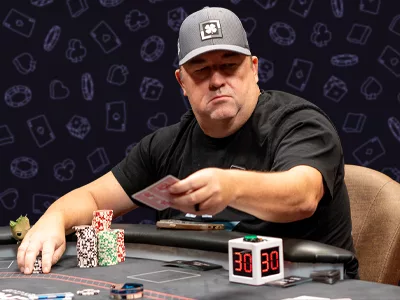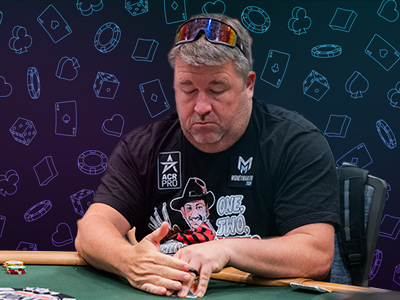Knowing when to muck can impact how opponents perceive your strategy In Texas Hold’em, the term “muck” refers to both the act of folding a hand and the pile of discarded cards during a game. Mucking typically occurs in two key situations: when a player folds their hand during a betting round or when they
Tag: Texas Holdem
Understanding Implied Odds for Small Pocket Pairs in Texas Hold ’em
Careful evaluation of potential future winnings is necessary to turn these hands into winning plays Implied odds play a crucial role in Texas Hold ’em, especially when deciding whether to call a preflop raise with small pocket pairs. Unlike direct pot odds, which focus only on the immediate risk versus reward, implied odds consider potential
How to Leverage Position in Heads-up Texas Hold’em Matches
By applying pressure and adjusting to opponent’s tendencies, you can maximize your edge in heads-up matches Position is one of the most important factors in heads-up Texas Hold’em. Since there are only two players, every hand consists of one player acting first and the other acting last. Understanding how to take advantage of position can
Setting Limits and Choosing the Right Stakes in Texas Hold’em
When it comes to winning at Texas Hold’em, the top players understand that establishing limits and choosing appropriate stakes are essential. If you’re grinding cash games or jumping into a tournament, you’re not successful because you’re familiar with the game—you’re successful because you’re making smart decisions with your bankroll and playing at stakes where you
The Importance of Being Aggressive in Heads-up Texas Hold’em
Being aggressive doesn’t mean playing recklessly, but rather controlling the game’s momentum Being aggressive in heads-up Texas Hold’em is one of the most important factors in gaining an edge over an opponent. Since there are only two players in the game, blinds come around quickly, and waiting for premium hands is not a viable strategy.
Bankroll Management During Bubble Situations in Texas Hold’em
Staying patient, avoiding desperation and recognizing when to take calculated risks ensures a stable bankroll Managing a bankroll effectively is crucial in Texas Hold’em, especially during bubble situations when tournament survival is at stake. The bubble is the stage where only a few players need to be eliminated before reaching the money. This phase requires
The Role of Pot Control With Small Pocket Pairs in Texas Hold’em
By focusing on pot control, you can extract value when conditions are favorable Managing the size of the pot with small pocket pairs in Texas Hold’em is a crucial strategy that can help players maximize value while minimizing risk. Since these hands—such as pocket twos through pocket sixes—are often vulnerable post-flop, understanding when to control
Differences Between Heads-up Play and Full Ring Games in Texas Hold’em
While both formats require skill, heads-up play demands more aggression and adaptability Texas Hold’em can be played in various formats, with heads-up and full ring games being two of the most distinct styles. While both follow the same fundamental rules, they require different strategies due to variations in player count, hand ranges, and betting dynamics.
The importance of position in Hold’em
Poker is a game of information, and nothing influences that more in No-Limit Texas Hold’em than position. Grinding cash games or battling deep in a tourney, where you’re physically close to the dealer button can be the difference between controlling action or having to speculate where you are. Understanding the strength of position and playing
Incorporating ICM Theory Into Texas Hold’em Bubble Play
By incorporating ICM theory, you can position yourself for a deeper run in the tournament In tournament Texas Hold’em poker, understanding the Independent Chip Model (ICM) can be the difference between making a profitable decision and busting out before the money. This concept becomes especially critical during bubble play, where one wrong move can cost
Leveraging Fold Equity in Small Pocket Pair Scenarios in Texas Hold’em
By recognizing the right moments to apply pressure, you can make your small pocket pairs more profitable Leveraging fold equity when playing small pocket pairs in Texas Hold’em is an important strategy that can help maximize profits and minimize risk. Small pairs, typically ranging from pocket twos to pocket sixes, have solid preflop strength but
Building an Effective Heads-up Opening Range in Texas Hold’em
An effective heads-up opening range is about maintaining an edge over your opponent Playing heads-up in Texas Hold’em requires a strong opening range to stay ahead of your opponent. Since there are only two players at the table, every hand holds more value, and aggression becomes a key factor in winning. Unlike full-ring or six-max













